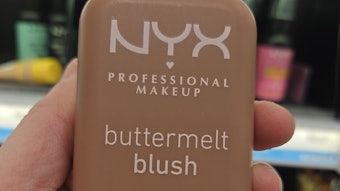*This paper was presented at the 28th IFSCC Congress in Paris (Oct 2015)
The stratum corneum’s (SC’s) functional status depends on it being in a plasticized state,1 which relies on adequate water-holding and waterproofing abilities. These abilities will depend on the state of the skin barrier, which is crucial to human survival. Daily life presents a number of challenges for this protective layer of the body. These include the use of simple cleansers,2 UV damage, environmental conditions, aging and skin diseases. Of these, the effects of aging and the environment were the main focus for the present study, which was conducted over winter months in a Nordic country and employed elderly female volunteers.
Many skin functions decline with age, such as cell regeneration, injury response, barrier function and sweat and sebum production.3 Dry and flaky skin is a common condition in elderly people due to a reduced water-binding capacity of the SC, as well as a decline in epidermal regeneration.4 In fact, the process of renewing the epidermal layer, which would typically take about 28 days in young adult skin, may increase to 40 to 60 days with age.5 A significant correlation also has been found between the hydration state of the SC and its amino acid content in elderly individuals with dry skin;6 aged skin is characterized by a decline in water barrier repair, which can lead to a loss of the water-soluble natural moisturizing factor (NMF) compounds from the surface layers.7
According to Luebberding et al.,8 only some aspects of the skin barrier function change with age. Sebum production has been found to decrease significantly with age, but SC hydration either remains unchanged in the cheeks and hands, or increased in the forehead, neck or forearms. This information corresponds with some previous studies9, 10 but conflicts with others;11, 12 it also corresponds with the human perception that aged skin needs more moisturization.4
Furthermore, although dry skin has been considered genetically predisposed to this state, individuals having different skin types can experience it due to factors such as climate.13 In studies conducted during summer and winter months in the UK, Rogers et al.14 demonstrated a significant reduction in the levels of SC ceramides and fatty acids in subjects during the winter. This is why weather is a key consideration in dry skin evaluations.15
Moisturizing products arose from a consumer need to treat and prevent dry skin conditions. The mass market for moisturizers started more than 150 years ago with products such as petroleum jellya and cold creamb,16 and the majority of today’s moisturizers are still designed around these two traditional approaches; i.e., humectants and occlusive agents.17 The skin mechanisms to retain moisture are related to activities of the NMF, lamellar lipid bilayers and the maturation of the corneodesmosome-bound corneocytes.18 An impaired skin barrier would cause the loss of water-soluble NMF, so the humectancy mechanism relies on the application of hygroscopic ingredients that act in a similar way to NMF. In fact, some humectants used in moisturizing formulations, such as lactic acid and urea, are components of the skin NMF.16 On the other hand, the deposition of oily materials to the skin surface creates an artificial barrier that restricts evaporation of water from the skin; i.e. they act as occlusive materials.16
Advanced moisturizers aim to go beyond the mechanisms of humectancy and occlusion in order to treat the underlying causes of skin dryness,15 e.g., by delivering skin lipids, NMF, lipid precursors, peptides, and amino acids. This biomimetic approach involves the application of multilamellar lipid structures similar to the skin surface lipids to promote the reconstruction of lamellar structures in the SC and restore skin barrier function.19
Using infrared spectroscopy, Prasch et al.20 have studied the mechanisms of strengthening the skin lipid film by means of creams. They compared a conventional w/o emulsion versus a lamellar cream containing lipids in a structure resembling the lipid film in the SC. The lamellar cream increased the degree of order of the alkyl chains in the SC in a biomimetic manner, while a standard w/o emulsion caused a reduction in the degree of order. This also was confirmed by changes measured in skin moisture; six hours after application of the two products, the lamellar cream showed a significant increase.
Other studies on this topic have suggested that while mineral oil causes an immediate partial restoration of the skin barrier properties of the SC, physiological lipid mixtures can have biological effects on the metabolism of the living epidermis. These slowly penetrate into the epidermis and rebuild the barrier in a natural way by accelerated metabolization in the lamellar bodies.21 They also play a part in the recovery of squamous skin following surfactant damage.22
Another recent study by Pennick et al.23 compared the effects of a lamellar cream versus a mineral oil-containing vehicle in a regression trial employing expert visual grading. These results showed the lamellar cream visibly improved the signs of skin dryness to a significantly greater extent and maintained a better skin condition during the regression phase.
Considering the described work, the aim of the present study was to compare two different approaches to skin moisturization in women over the age of 60: traditional occlusion vs. biomimetic ingredients. This data could provide insight as to the best approach to re-hydrate aging skin.
Materials and Methods
Materials: An essential factor for the selection of skin-identical lipids for a moisturization study is their composition. Studies by Thornfeldt24 and Mao-Qiang21 have shown the importance of lipid ratios and how topical application of individual lipids or incomplete mixtures of lipids could interfere with barrier recovery rather than promote it. Two commercially available biomimetic active ingredients containing approximately 2.5% active content of skin-identical lipids were selected for the formulation of test products (see Table 1).
Active I was a ready-to-use, emulsified lamellar system, and Active II was a concentrated lipid paste. Both blends claimed to have compositions similar to skin surface lipids, and both claimed to work by forming a protective barrier on the skin and restoring the missing lipids, thus providing care to dry and sensitive skin. These were formulated into an emulsion vehicle containing glycerin, carbomer, caprylic/capric triglyceride, preserved water, sodium hydroxide, disodium EDTA and tocopheryl acetate, stabilized with an alkyl polyglucoside emulsifier system.
Methods: This in vivo study was carried out in two stages: first, a four-hour moisturization study on the inner lower legs, and second, a three-week regression study on the inner lower legs and the back of hands, in combination with self-assessment at baseline and three weeks. The testing equipment consisted of a corneometerc for both stages and a skin pH meterd for only the second stage.
Short-term protocol: In the first stage of the study, the performance of the two biomimetic prototypes was evaluated against a non-application site and a commercial product containing petrolatum and mineral oil as moisturizing ingredients. Sixteen volunteers from the target age group were recruited for a four-hour, blind skin hydration trial on the lower legs, using randomized intra-individual, left-right comparison. The study was conducted after a one-week wash-out phase of no moisturizer application on the test sites. The better-performing biomimetic prototype was chosen for testing against the commercial product during the second stage of the study.
Longer-term protocol: A long-term, two-week (Monday through Friday) study was designed as a mini-regression test in which products were applied twice daily, followed by a one-week regression phase, for a total of three weeks. This involved applying the biomimetic prototype to one lower leg (shin) and the back of one hand (dorsal side), and similarly applying a commercial product to the other lower leg and hand. Twenty total participants, over the age of 60, were provided with color-coded test products to use at home, with instructions and a basic hand and body wash to standardize their cleansing routines. The subjects traveled to the test center for the corneometer and skin pH measurements at baseline, after one and two weeks of product application, and at the end of the one-week regression stage.
Self-assessment: In order to compare the results measured instrumentally with the subjects’ impressions of the products, the volunteers completed a self-assessment questionnaire. They were instructed to note any changes they observed in their skin condition during the study. The questionnaire was designed to be simple and easily understood, but also to give information on the subjects’ moisturizing habits, the performance of the test products, and their preference between the two. The data obtained from the two trials were evaluated using the “R” software package for statistical computing and graphics, based on the median of three consecutive measurements. The results were checked for normality and the methods used consisted of two-way analysis of variance (ANOVA), Student's t-test and binomial tests.
Results and Discussion: Short Term
The aim of this trial was to evaluate and compare four-hour effects of the three test products and select a biomimetic prototype for the next stage. First, one-way ANOVA showed no significant differences in the baseline measurements of the test sites, even though the skin on the lower legs was shown to be quite patchy and gave variations in measurements. Therefore, a two-way ANOVA test with replications was employed on all the hydration measurements for the stage one study, to compare the different test products and check how the two factor variables—i.e., treatment (test product) and time (i.e., after application)—matched up with the variable hydration response. The resulting p values showed a very significant difference (p = 1.274e-07) between the treatments with different test products, and a significant difference (p = 0.00861) between the levels of hydration at different time points. This is visually demonstrated in Figure 1, which shows the results of the Tukey post-hoc test, which revealed where the significant changes in hydration were. For the results shown, A = Active I; B = Active II; C = Commercial product; D = No application; H0 = Baseline; H1 = 1 hour after application; H2 = 2 hr after application; H3 = 3 hr after application; and H4 = 4 hr after application.
Figure 1 shows the two prototypes performed equally well, and as the B-A segment stretches right across the vertical 95% confidence line, there was no significant difference between the effects they delivered. Both prototypes delivered significantly higher results compared with the benchmark and the no-application control. The confidence levels for prototype A, i.e., the C-A and D-A interactions, were slightly higher than those delivered by prototype B, i.e., interactions C-B and D-B, which indicates but does not prove better performance.
Interestingly, no significant change was found in the effects provided by the commercial lotion compared with the no-application control. This can be explained by the fact that the occlusive mechanism, which relies on materials such as petrolatum, provides better effects over time and with repeated applications.15 On the other hand, the changes in skin hydration delivered by the test products were significant up to 2 hr after application, compared with the baseline values. No other significant differences were found regarding the time after application.
A representation of the variations in skin hydration response for the three different treatments and no-treatment control over the course of the study is presented in Figure 2. The skin hydration values for all test products peaked at 1 hr after application. An identical pattern was observed for the two biomimetic prototypes, and the results for both were much higher compared with the occlusive commercial product. The small drop in the no-application control readings at 3 hr after application was analyzed using two-sample t-test for hours 2 to 3, and 3 to 4, to see if there were any significant variations, which could mean a variation in test conditions. The tests showed no statistical significance.
As the results of this trial suggest, both Active I and Active II prototypes showed superior performance to the commercial product. These findings are in accordance with the previously mentioned, six-hour study by Prasch.20 However, this test is not conclusive and it is clear that further investigation is warranted to fully study the effects of the products in a multiple application trial. The Active I prototype was chosen for further study due to the slightly higher confidence levels (see Figure 1).
Results and Discussion: Longer Term
As noted, the second part of this study was performed to assess changes in skin hydration and pH levels over time: during two weeks of product application, followed by one week of no product application. The test subjects’ opinions also were considered and compared with instrumental results.
SC hydration: Two-way ANOVA analysis revealed a significant difference between the two treatments, both on the hands (p = 1.224e-05) and on the lower legs (p = 5.466e-05). No significant difference was found during product application between weeks one and two. These results are shown in Figure 3. The results for different weeks were isolated and compared using the two-sample paired data t-test. Significant results were marked on the interaction plot using symbols.
As Figure 3 shows, after one week, an increase in hydration values on the hands for the Active I prototype was observed. However, this showed no statistical significance compared with the baseline values. In the second week of application, results increased slightly but continued to rise in the regression stage. Although no statistical significance was found for the increase between the ends of week two and week three (the regression phase), results of the baseline vs. post-regression were highly significant (p = 0.002229). On the contrary, the commercial benchmark showed no improvement during the course of application, and a statistically significant (p = 0.0008) drop in hydration from week two to the end of regression phase. This decrease was also significant (p = 0.003) in comparison with the baseline.
Skin hydration results of the regression study on the lower legs, shown in Figure 4, reveal similar trends. For this test site, the prototype showed no increase during the first week of application but a statistically significant rise (p = 6.606e-05) during the second week. Corresponding to the findings for the hands, hydration in the legs continued to increase during the regression stage, with no significance compared to week two but a significant increase over baseline values (p = 0.001). Also similar to results in the hands, the benchmark in the legs showed a significant decrease during the regression stage compared to week two (p = 0.006) and over the baseline (p = 0.019).
Overall, the results of both test sites confirmed superior performance of the biomimetic prototype over the standard commercial o/w lotion. This data corresponds to the findings of Prasch et al.,20 in terms of higher skin hydration obtained from the lamellar-structured cream. A regression test by Pennick et al.23 employing visual grading also showed positive effects of lamellar structures. Since the reasons behind the increase of skin hydration during the regression stage of the prototype are not fully understood, further research could benefit from a longer regression phase, to determine at what time point the skin would return to its initial state. A possible explanation for the continuous improvement could refer back to the work of Mao-Qiang et al,21 which suggests a physiological lipid mixture could influence the metabolism of lamellar bodies in the epidermis and thus improve the skin barrier function.
Also, the low results recorded for the benchmark could be due to the fact that measurements were taken three days after the last product application. This suggests that while the biomimetic prototype might be able to deliver increased skin moisturization up to three days after the last treatment, as observed by Pennick et al.,23 the occlusive effects of the benchmark might be limited to a shorter term efficacy. Further investigation of these test products is required, and with alternative instrumental methods such as TEWL and Confocal Raman Spectroscopy to determine changes in the water content of the SC and its thickness, as suggested by a study by Crowther et al.25
Skin pH: Measurements of the skin surface pH can reveal important information about the state of the skin barrier. This is why pH values of the backs of hands and the lower legs were recorded during the long term study. Analysis of the data using a 2-way ANOVA test showed no significant changes in pH values for any of the test sites.
Self-assessment: The self-assessment questionnaire revealed volunteers’ moisturizing habits and impressions of the two test products; 55% of volunteers considered their skin to be dry, while 35% thought theirs was normal (see Figure 5). This data fits with the findings of Luebberding et al,8 which indicate aging is not always accompanied by skin dryness. In fact, the questions regarding subjects’ moisturizing habits showed that 20% of participants did not moisturize regularly, and none of them would typically use a moisturizer more than once a day. This shows that although studies indicate a reduced water-binding capacity, decline of the regeneration of the SC and of the production of skin lipids,26 and significant reduction in skin hydration with age,11 most volunteers felt they did not need to moisturize every day, with the majority doing so several times a week. The effects of the two test products in delivering skin moisture and softness were significant at p < 0.01, per a 2-sample paired data t-test, for both questions; Figure 6 and Figure 7 illustrate the results obtained.
The effects of the Active I prototype were perceived to be better than the commercial product, which was in line with instrumental results. Interestingly, the negative effects observed for the benchmark during the instrumental trial were not detected by all consumers, and the product received scores as high as 8 on a scale of 1-9. This shows how equipment can sometimes identify changes that might not necessarily be recognizable by the human eye or touch. Further, apart from delivering superior moisturization, the biomimetic prototypes were designed to provide a better texture and improved skin feel than the products based on the occlusive mechanism. The opinion of the volunteers on this matter is demonstrated in Figure 8. This data was analysed using a two-sided binomial test, and the 65% of individuals preferring the texture of the biomimetic prototype did so at a significant 99% confidence level.
On a whole, the self-assessment questionnaire revealed that the Active I prototype was the preferred option to the commercial product in delivering benefits to the skin and for its sensory properties. This reflects the outcomes of the four-hour instrumental trial and three-week regression study, and compliments other instrumental studies20-22 and a visual grading study,23 showing that the measured effects can also be identified by the consumers.
Conclusion
The present study demonstrates that providing the skin with lipids identical to those that make up the natural skin barrier can improve skin hydration to a greater extent than conventional o/w emulsions based on occlusive materials and humectants. In addition, it suggests that using biomimetic moisturizers is an effective and longer-lasting method to alleviate dry skin conditions in women over the age of 60. In the future, it would be interesting to repeat this study with older participants (e.g., over 80), since this group tends to suffer from the unpleasant consequences of very dry skin and could greatly benefit from effective and long-lasting moisturization.
References
- GK Menon and L Norlen, Stratum corneum ceramides and their role in skin barrier function, in J Leyden and AV Rawlings, eds, Skin Moisturization, New York, Marcel Dekker (2002)
- TG Polefka, Surfactant interactions with skin, in U Zoller and G Broze, eds, Handbook of Detergents. Part A: Properties, New York, Marcel Dekker (1999)
- B Gilchrest and J Krutmann, Skin Aging, Springer, Berlin (2006)
- E Proksch, Dryness in chronologically and photo-aged skin, in M Loden and HI Maibach, eds, Dry Skin and Moisturizers: Chemistry and Function 2nd edn, CRC Press, Boca Raton (2006)
- AM Kligman, Perspectives and problems in cutaneous gerontology, J Inves Derm 73(1) 39-46 (1979)
- I Horii, Y Nakayama, M Obata and H Tagami, Stratum corneum hydration and amino acid content in xerotic skin, Brit J Derm 121 587–592 (1989)
- EM Zettersten, R Ghadially, KR Feingold, D Crumrine and PM Elias, Optimal ratios of topical stratum corneum lipids improve barrier recovery in chronologically aged skin, J Amer Acad Derm 37 403-408 (1997)
- S Luebberding, N Krueger and M Kerscher, Age-related changes in skin barrier function–Quantitative evaluation of 150 female subjects, Int J Cos Sci 35 183–190 (2013)
- V Agarwal, M Godfrey, S Long, D Whitby, S Barton and A Desnos, Variability in the physical properties of the stratum corneum–Influences of chronological age and season, Int J Cos Sci 29(3) 219 (2007)
- KP Wilhelm, AB Cua and HI Maibach, Skin aging. Effect on transepidermal water loss, stratum corneum hydration, skin surface pH and casual sebum content, Arch Derm 127(12) 1806-1809 (1991)
- IL Shlivko et al, Complex assessment of age-specific morphofunctional features of skin of different anatomic localizations, Skin Res and Tech 19 85–92 (2013)
- P Thune, T Nilsen, IK Hanstad, T Gustavsen and H Lövig-Dahl, The water barrier function of the skin in relation to the water content of stratum corneum, pH and skin lipids. The effect of alkaline soap and syndet on dry skin in elderly, non-atopic patients, Acta Dermato-Venereologica 68 277–283 (1988)
- V Couturaud, Biophysical characteristics of the skin in relation to race, sex, age and site, in AO Barel, M Paye and HI Maibach, eds, Handbook of Cosmetic Science and Technology 3rd Edn, Informa Healthcare, London (2009)
- J Rogers, CR Harding, A Mayo, J Banks and AV Rawlings, Stratum corneum lipids: The effect of aging and the seasons, Arch Derm Res 288 765-770 (1996)
- G Nole, Clinical testing of moisturizers, in J Leyden and AV Rawlings, eds, Skin Moisturization, Marcel Decker, New York (2002)
- AW Johnson, The skin moisturizer marketplace, in J Leyden and AV Rawlings, eds, Skin Moisturization, Marcel Dekker, New York (2002)
- B Chavan, G Pennick, B Summers and AV Rawlings, Effect of an amphiphilic self-assembled lipid lamellar phase on the relief of dry skin, Stratum Corneum VII conference presentation (2012)
- AV Rawlings and PJ Matts, Stratum corneum moisturization at the molecular level: An update in relation to the dry skin cycle, J Inves Derm 124 1099–1102 (2005)
- JK Jung, YH Ahn, SM Bae and JG Hwang, Study on the bio-mimic liquid crystal emulsion for skin barrier, IFSCC conference presentation, Amsterdam (2007)
- T Prasch, G Knübel, K Schmidt-Fonk, S Ortanderl, S Nieveler and T Förster, Infrared spectroscopy of the skin: Influencing the stratum corneum with cosmetic products, Int J Cos Sci 22 371–383 (2000)
- M Mao-Qiang, BE Brown, S Wu-Pong, KR Feingold and PM Elias, Exogenous nonphysiologic versus physiologic lipids. Divergent mechanisms for correction of permeability barrier dysfunction, Arch Derm 131 809-816 (1995)
- G Imokawa, S Akasaki, Y Minematsu and M Kawai, Importance of intercellular lipids in water-retention properties of the stratum corneum, Induction 281 45-51 (1989)
- G Pennick, B Chavan, B Summers and AV Rawlings, The effect of an amphiphilic self-assembled lipid lamellar phase on the relief of dry skin, Int J Cos Sci 34 567-574 (2012)
- C Thornfeldt, Critical and optimal molar ratios of key lipids, in M Loden and HI Maibach, eds, Dry Skin and Moisturizers: Chemistry and Function 2nd edn, CRC Press, Boca Raton (2000)
- JM Crowther et al, Measuring the effects of topical moisturizers on changes in stratum corneum thickness, water gradients and hydration in vivo, Brit J Derm 159 567–577 (2008)
- E Proksch, Dryness in Chronological and Photo-Aged Skin, CRC Press, Boca Raton (2006)











